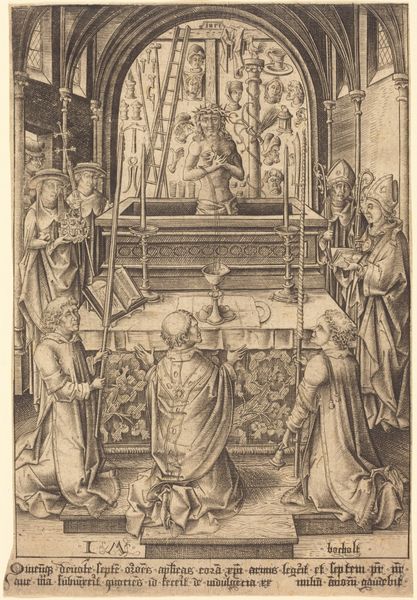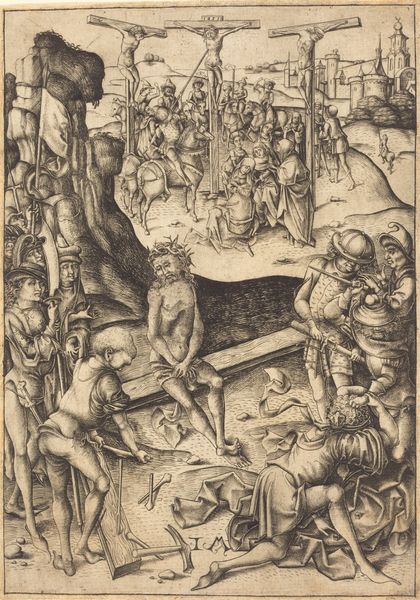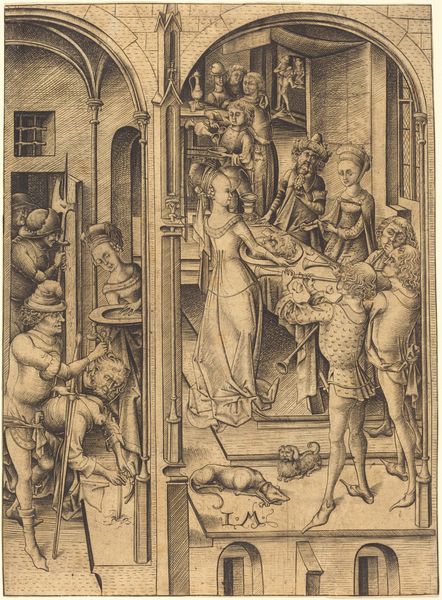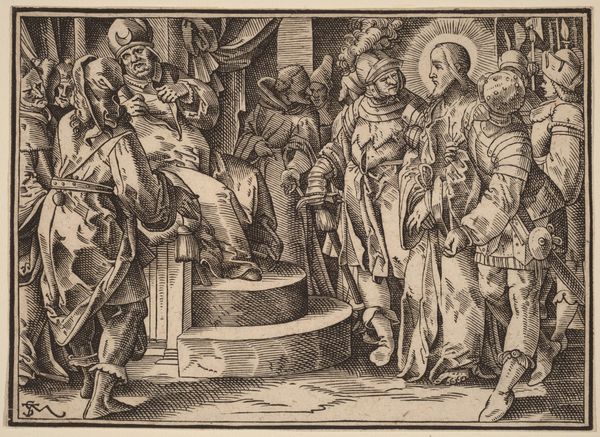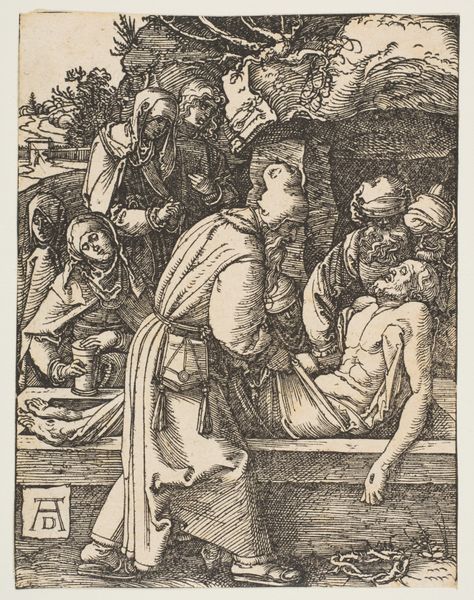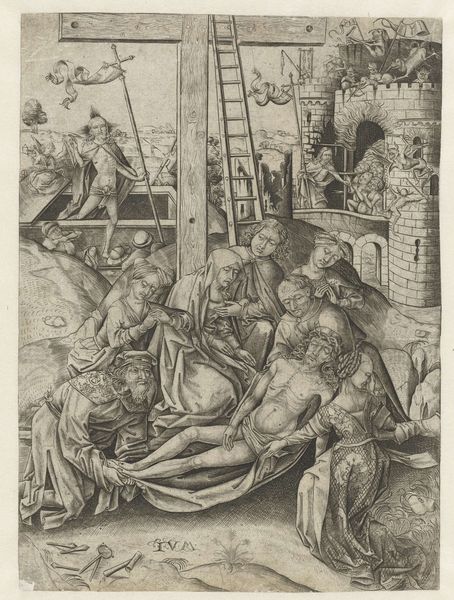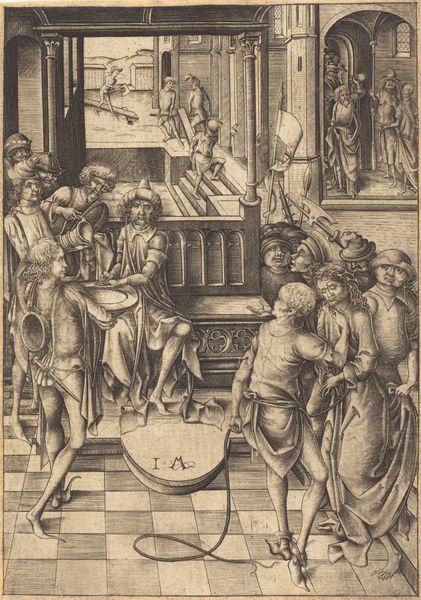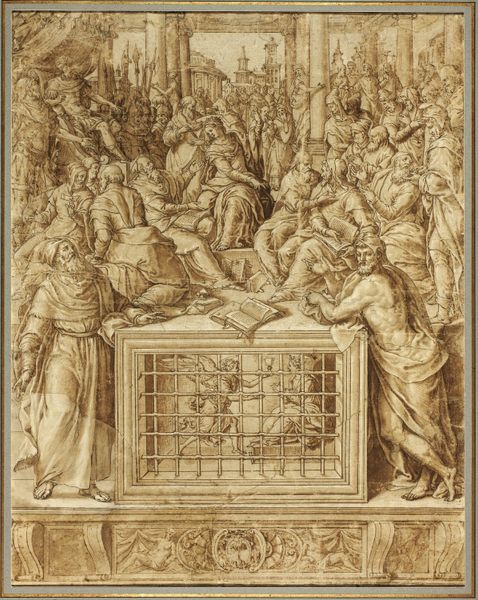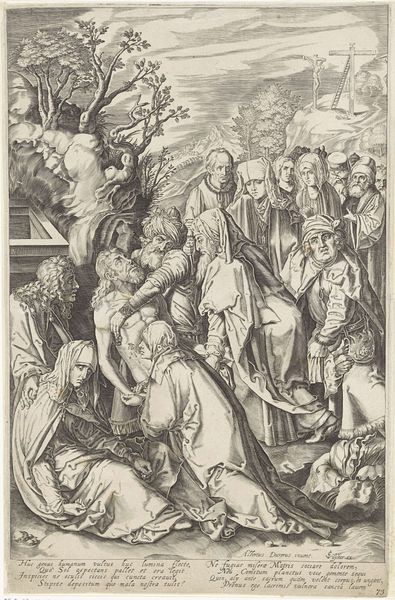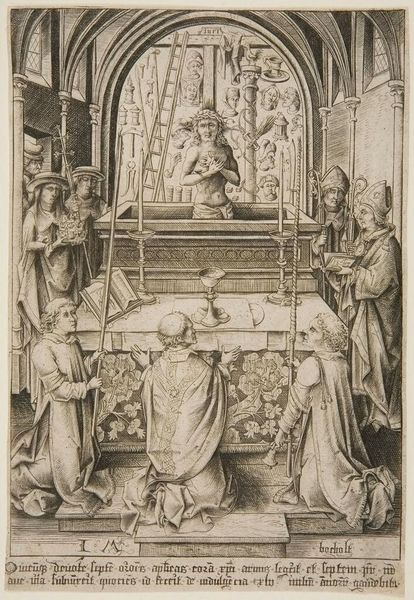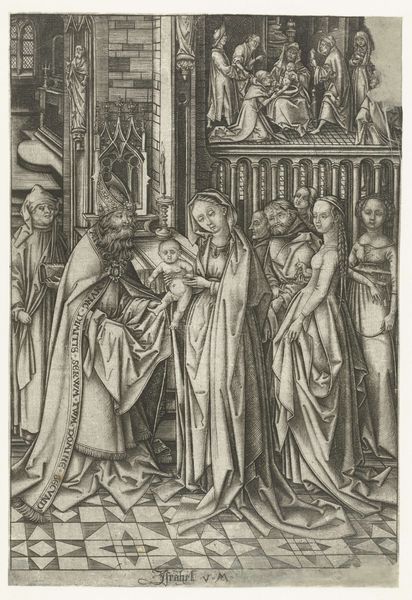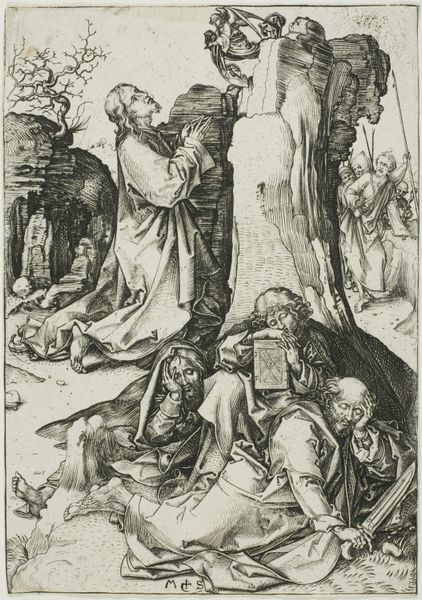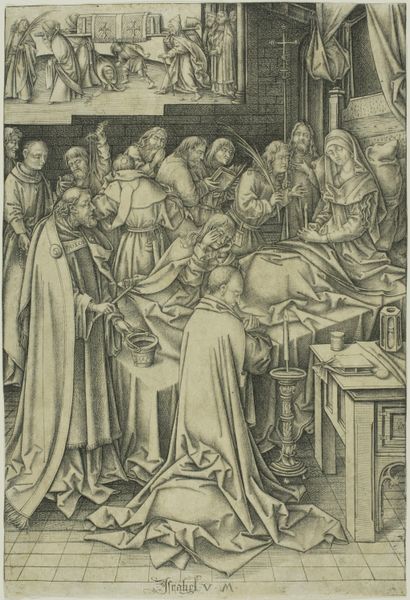
panel, oil-paint
#
panel
#
narrative-art
#
oil-paint
#
figuration
#
oil painting
#
12_15th-century
#
history-painting
#
italian-renaissance
#
early-renaissance
Dimensions: 40.2 x 40.7 x 0.5 cm
Copyright: Public Domain
Curator: What a powerful image. This oil on panel work is entitled "Martyrdom of St Matthias," and it was created after 1435 by Stefan Lochner. It currently resides in the Städel Museum. The whole scene exudes stillness. Editor: Stillness, yes, but also this unsettling anticipation. Look at St. Matthias kneeling, seemingly unafraid as the executioner raises the axe. Even the gold halo around his head feels almost… ominous, in this context. Curator: Absolutely. The setting offers a lens into the religious beliefs and visual culture of the 15th century. Lochner was working in a time when images were explicitly political, meant to communicate the authority of the Church. These martyrdom scenes bolstered faith, reminding viewers of sacrifice and divine reward. Editor: Notice how the axe itself, centered above St. Matthias, is shaped much like a crescent moon? In pre-Christian symbolism, the moon axe represents the divine feminine power of transformation and change. To see it looming over a kneeling man introduces quite a contradiction here. What is meant to destroy may be the path to renewal. Curator: An intriguing take, given the Early Renaissance context and likely patron of this piece! While this does signal a transformation, it's also the point when the power structure maintains its power. What are your thoughts on the color, then? St. Matthias is garbed in vibrant green. Editor: The green strikes me as interesting. Green traditionally represents hope, renewal, even resurrection. Given that Matthias is about to die, the color takes on an incredibly poignant dimension, becoming symbolic of the ultimate triumph over earthly demise, eternal life and connection to the god. Curator: These works solidified social order, defining who was within the circle of faith and who stood outside. This artistic expression played an undeniable part in maintaining power. Editor: I agree, although these visual choices do show how art complicates narratives of authority and displays a rich language we still benefit from exploring today. Curator: Indeed. Understanding these historical undercurrents allows us to consider art’s evolving role and impact across centuries.
Comments
Join the conversation
Join millions of artists and users on Artera today and experience the ultimate creative platform.
